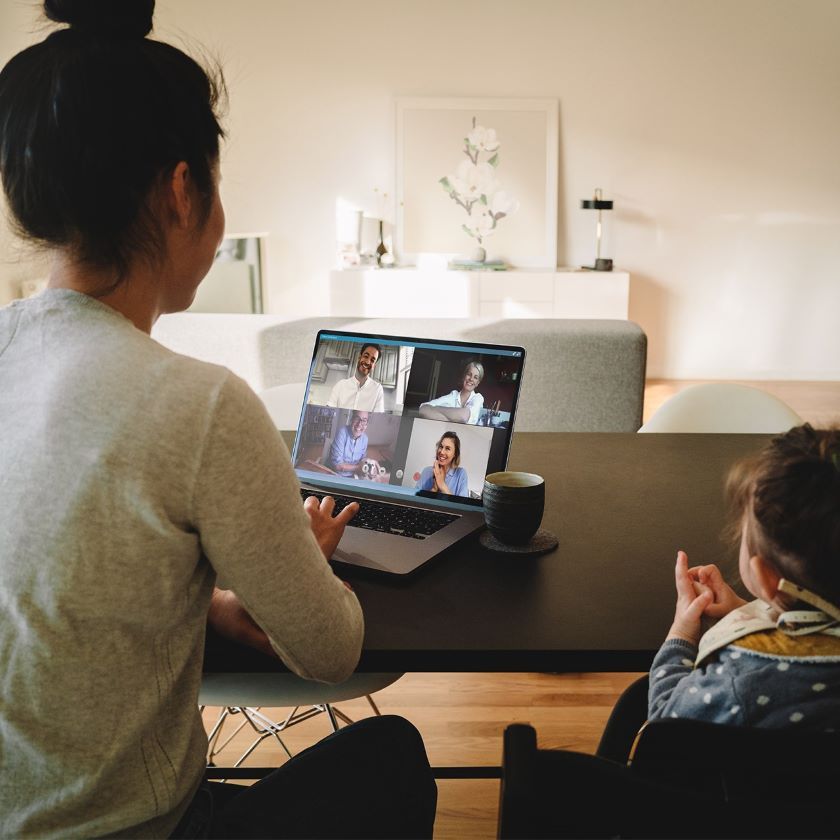Stakeholder meetings are crucial for project success. In this guide, we’ll explain how to prepare for and run effective stakeholder meetings that get results.
Stakeholder meetings are essential for keeping projects on track and ensuring that everyone involved is on the same page. But what exactly is a stakeholder meeting, and how do you run one effectively?
In this article, we'll answer those questions and provide you with some tips for using Dropbox to make your stakeholder meetings even more productive.

What’s a stakeholder meeting?
A stakeholder meeting is a gathering of all the important people involved in a project or business relationship—basically, you as the product or service provider and your clients. These meetings provide an opportunity for stakeholders to share their input, voice their concerns, and make decisions about the project.
Who should attend a stakeholder meeting depends on the purpose and intended outcome of the meeting.

Different types of stakeholder meetings
There are several different types of stakeholder meetings, each with its own purpose and format. Some common types of stakeholder meetings include:
- Kick-off meetings: These meetings are held at the beginning of a project to set the purpose, goals, and scope of the project. They're also a good opportunity to introduce the project team and stakeholders to each other.
- Stakeholder interviews: These are one-on-one meetings with stakeholders to help you understand their vision, goals, current processes, and concerns.
- Additional stakeholder meetings: These meetings are held throughout the project lifecycle to check in with stakeholders, keep them informed about progress, and get their feedback.
How to prepare for a stakeholder meeting
To ensure that your stakeholder meeting is productive, it's important to do some preparation beforehand. Here are a few tips to bear in mind as the meeting facilitator:
Have an objective
Have a clear purpose for the meeting—are you giving a status update? Do you require feedback on a particular deliverable? Do you have a dispute or disagreement that needs to be cleared?
When you know why you need to meet with your stakeholders—and make it clear why they should meet with you—who should attend the meeting will become much clearer.
Have a meeting agenda
Prepare an agenda to give your meeting a structure and focus. You may want to email your agenda to the attendees prior to the meeting, so they can prepare questions and additional points of discussion—and use Dropbox Send and track to monitor who's engaging with this before your meeting.
Points you may want to discuss include:
- Project timelines or roadmaps
- Project milestones
- Recent or upcoming deliverables
- Results or performance
- Potential risks or concerns
- Next steps or actions
Send links to relevant agenda documents and materials in an easy-to-access format with Dropbox.
Understand who needs to attend—and what matters to them
Inviting too many people to your meeting can get messy—too many cooks, right? It’s almost as bad as having too many meetings—it gets chaotic and takes away valuable time you could spend doing actual work.
By only inviting the relevant stakeholders to the meeting, you can be much more productive. If there are a lot of stakeholders involved in your project, limit the number of meeting attendees by considering why a specific person doesn’t need to be there, rather than why they do.
Having smaller meetings also allows you to open the discussion to the stakeholders’ individual priorities, and the reasoning behind particular decisions or disagreements. Unless you have all day, you can’t address everyone’s concerns or questions in a big meeting!
Who is a stakeholder?
Put simply, a stakeholder is someone with a vested interest in the decision-making process and activities of a business or project. Without their support, the business or project wouldn’t be able to function.
A stakeholder could be any of the following examples:
- Director or deputy director
- Investor
- Chief Information, Financial, or Executive Officer
- Project manager
But more broadly, there are internal stakeholders—your employees, owners, and managers—and external stakeholders. These are your customers, shareholders, creditors, government, labor unions, and so on.
Be ready for additional questions
No matter how much you prepare, your stakeholders will likely ask you some questions that you didn’t plan for in your agenda. To demonstrate your professionalism and commitment to the project, you should anticipate and prepare for some potential questions that could come up.
You can’t always predict these, but you’ll certainly impress your stakeholders if you have great answers in your back pocket.

How to run a stakeholder meeting
Once you've prepared for your stakeholder meeting, it's time to run the meeting. Here are a few tips:
Set a good example
As the host, you set the tone for the meeting. You should demonstrate good meeting etiquette and be engaged. Practice active listening and stay present.
Keep it focused
Try to follow your agenda and remember the additional topics/questions that you’ve prepared for. Demonstrate that you’re a proactive host who has foreseen potential issues in advance, rather than a reactive one who can’t manage avoidable problems. This will help build trust with your stakeholders.
When you stick to your agenda as much as possible, you can then leave time for brainstorming or Q&A at the end of the meeting. Try to encourage everyone to speak and participate—not just the key players.
Use language your stakeholders understand
We sometimes take it for granted that our clients understand the technicalities of what we do. While they’re knowledgable about their own industry, they’re probably not experts in your product or service—but you are.
Try to strip out any confusing or overly-technical jargon that stakeholders may not understand, and instead focus on what matters to them most.
Post-meeting tips
After your stakeholder meeting, it's important to follow up and make sure that any action items are completed—and to schedule your next meeting, if necessary.
Dropbox can help you with this by providing a central place to store meeting notes, links to content, and video recordings. You can also use Send and track to send out meeting materials and track who’s viewed them.
Or, if you recorded your meeting, you can share this directly from your Dropbox account—boosting stakeholder engagement, as those who didn’t attend can catch up, and those who did can refresh their memories.
Effective stakeholder meetings with Dropbox
Dropbox is the perfect partner for stakeholder meetings. With features like Send and track, document analytics, and advanced sharing controls, Dropbox makes it easy to prepare for, run, and follow up on stakeholder meetings.


